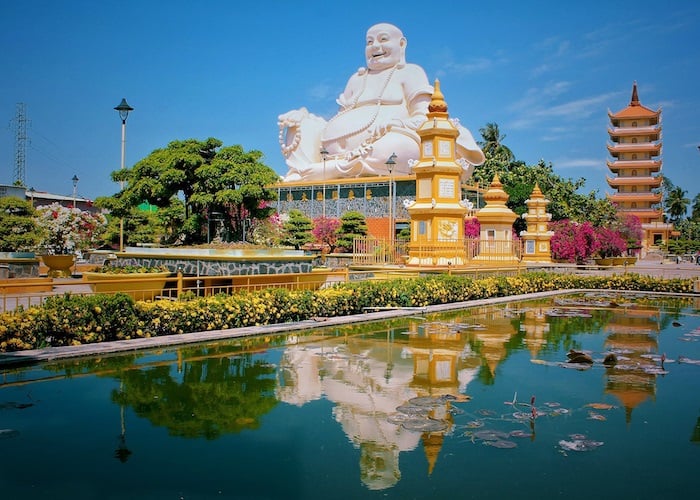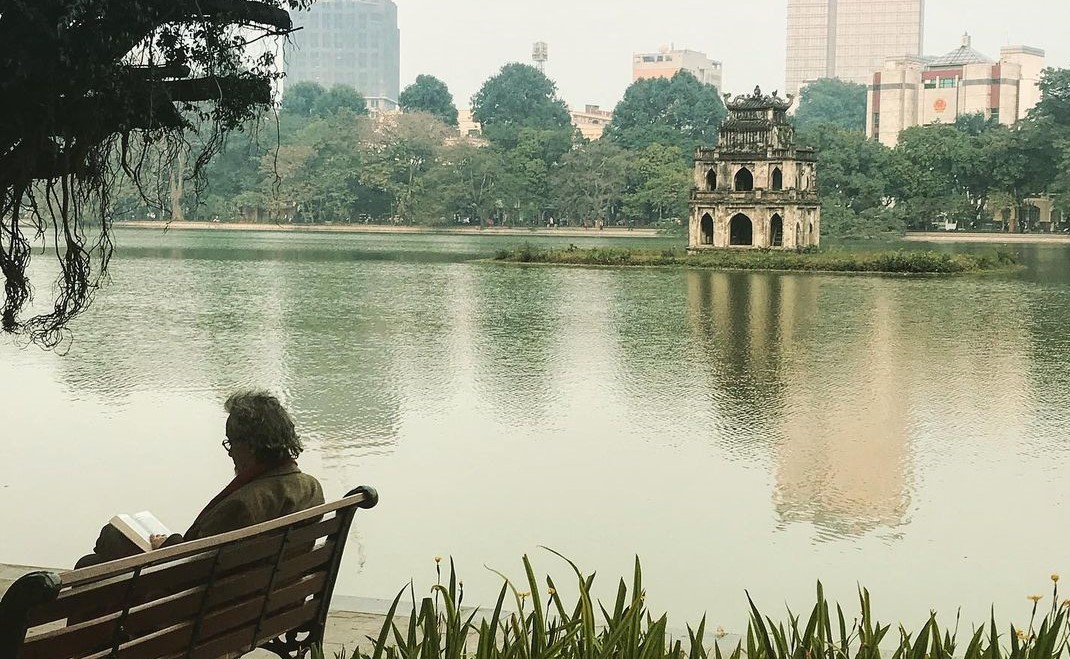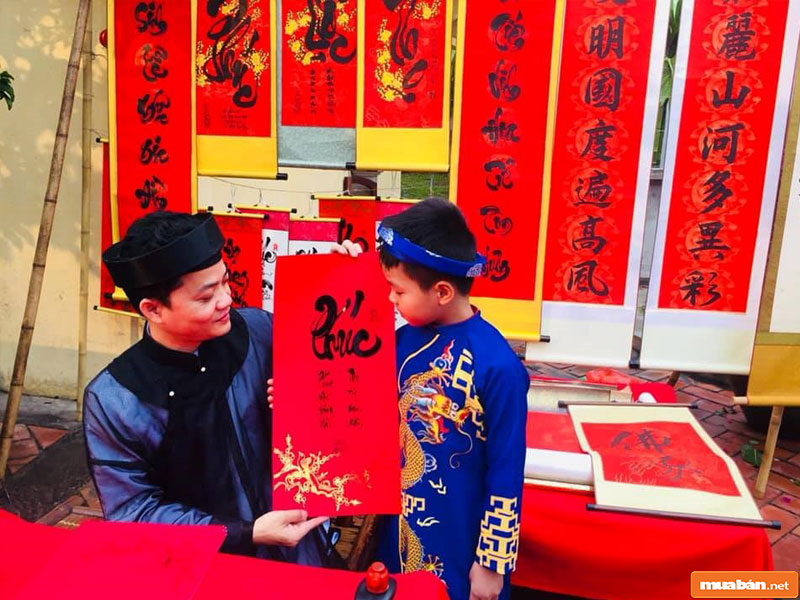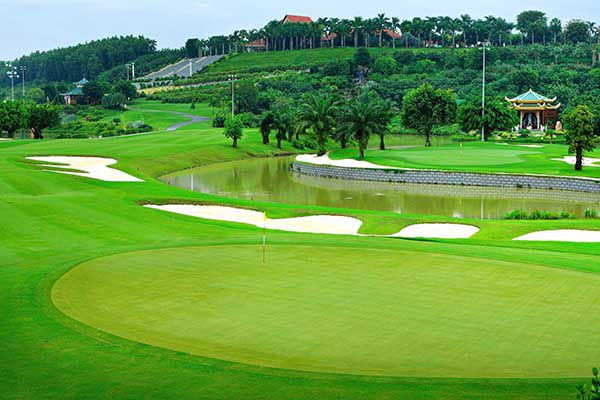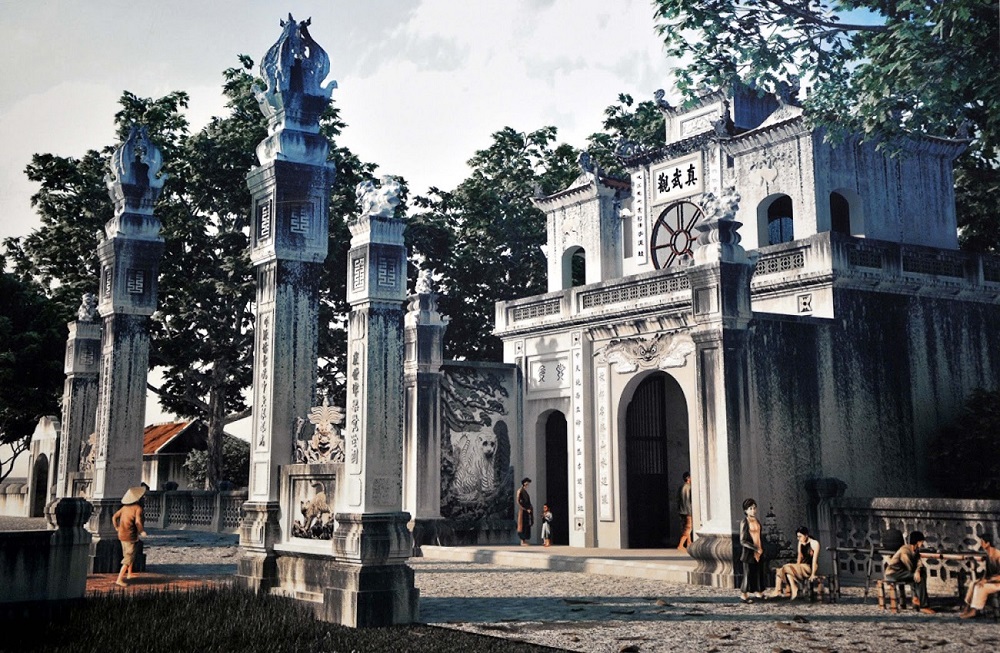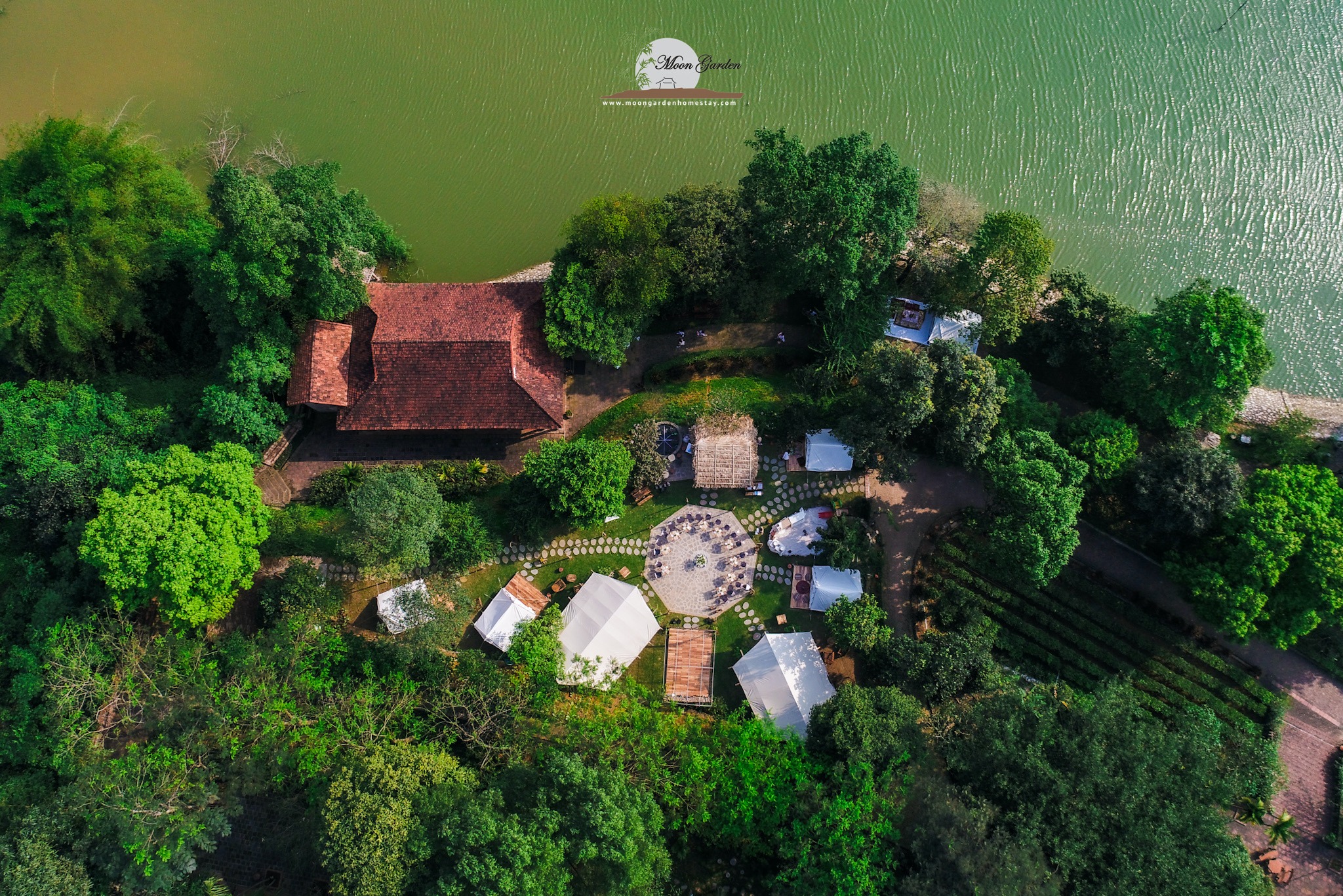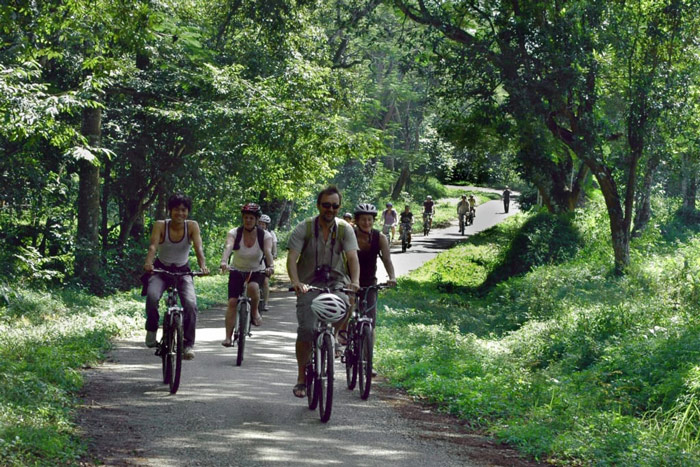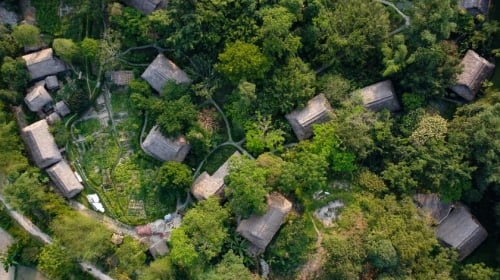Laos is a peaceful and unspoiled country, which attracts millions of tourists from all over the world to visit each year. With ancient architecture in unique Buddhist works across the country and unspoiled natural scenes, traveling to Laos will surely give you unforgettable feelings. Passionate Travel has compiled for you 10 impressive Laos tourist attractions that you should not miss when visiting this country of millions of elephants.
Vientiane Capital
No hustle, bustle, and bustle, any visitor to the capital Vientiane will feel that Vientiane is a place with a slow pace of life with a strange peace, a sense of peace and closeness. Here everything is not crowded and crowded, only peace and relaxation exist, without mixing and jostling each other, so everyone feels full of happiness. With a long history of existence, Vientiane attracts every visitor with its ancient architecture, bearing the historical imprint of gentle and lovely Laos. As we all know, the Buddhist spiritual imprint has permeated the soul of every Laotian and blended into every scene here, so anywhere in the capital, Vientiane visitors can admire the imprint of Buddhism. Thousands of years ago, the reliefs and Buddha statues were sculpted with a sincere heart.
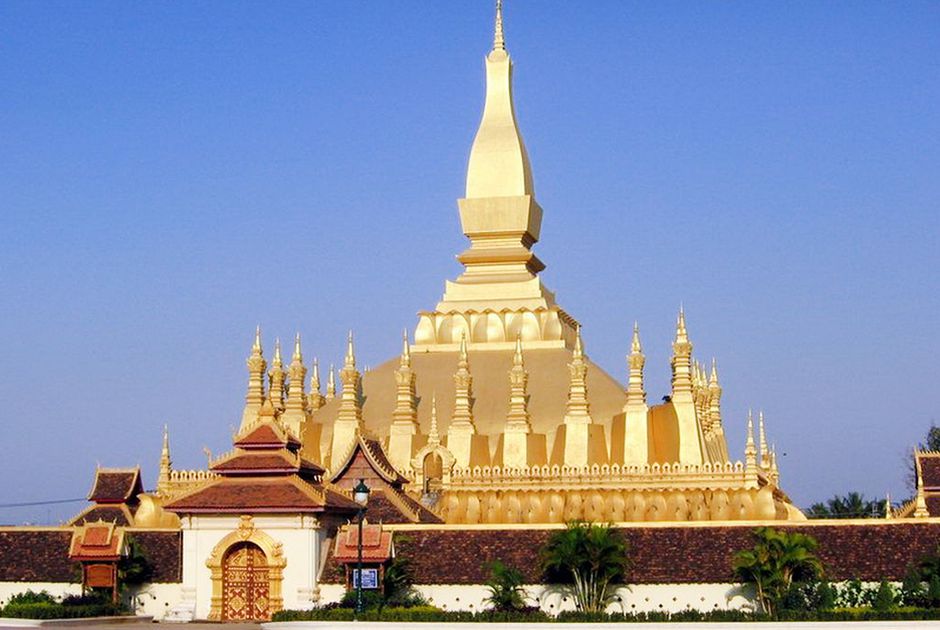
Pha That Luang Vientiane
When coming to Vientiane, we cannot ignore the pride and symbol of Laos – the world heritage That Luang. When looking at this beautiful relic tower, visitors will have the opportunity to be satisfied with the luxury of a magnificent gold-plated masterpiece. This also shows the Lao people’s devotion to Buddhism from ancient history. The destinations not to be missed for a pilgrimage to Vientiane are the Buddha Statue Garden, Arc de Triomphe, Phra Keo Pagoda, Wat Ong Theu, and Sisaket Pagoda… The temples represent a culture, which is the same. This is the place where the people here who put their faith in the divine will touch all sentient beings, and dispel all the suffering in the tumultuous life.
Luang Prabang ancient capital
Compared with Siem Reap in Cambodia and Hue in Vietnam, the ancient city of Luang Prabang is gradually renovating to deserve the name “tourist city” of Laos. Along the gentle Mekong River, Luang Prabang hides ancient architectural works, bearing the feats of the Lao people for a long time. It is said that when looking at the ancient capital of Luang Prabang, one can imagine and feel the life of ancient Laos. In the mysterious atmosphere and gentle beauty of natural landscapes, the palaces are still standing tall and solemn in the capital city of Luang Prabang to tell each visitor about the ancient history of the beautiful country of Laos. The great sightseeing destinations in Luang Prabang are Pak Ou cave, Tad Sae waterfall, the royal palace, Mount Phousi, and Wat Xieng Thong.

Traveling to Laos, visit the peaceful, close, and friendly ancient capital of Luang Prabang, which every Laotian, wherever he is, wishes to once set foot. Every early morning on Sisavangvong main street and the smaller streets around it, locals along with tourists spread out mats and kneel on the sidewalk, arranging offerings to prepare for the alms round. Begging for alms is a very typical cultural feature of countries following Buddhist beliefs. The time for alms-giving may vary, but it always takes place before 12 noon. Nowadays, many visitors to Luang also enjoy and sincerely participate in the alms-giving ceremony, they respectfully place the offerings in the bowl and experience moments of silence and peace of mind.
Kuang Si Waterfall
One of the most wonderful places in the country of millions of elephants, the Kuang Si waterfall complex promises to be a magical natural paradise for every visitor. You are like entering the hermitage of the fairy on a journey to explore the wild mountains and forests and enjoy bathing in the cool lakes in the romantic Kuang Si area. Each visitor when visiting this place will enjoy the impressive natural beauty of the white foam created when the waterfall falls, blending into the harmonious music from all kinds of choir birds. Kuang Si scenic spot is a magical place for each of us to immerse our soul in nature to relieve the stress of the hustle and bustle of the world.

The most impressive thing about Kuang Si is the cascades stacked like stairs, the water pours from the high mountains and then down to the lower and wider floors, forming large lakes. Kuang Si is a complex of three waterfalls, in which the main waterfall is about 60m high with water pouring down from above, making white foam, and blowing mist, creating an impressive scene. Kuang Si waterfall water has a pale jade green color, attracting all eyes of visitors. Standing on the wooden bridge over the waterfall, visitors can also see a lot of fish swimming below. With the humid weather all year round, the government here is very protective of the flora and fauna, so the nature of KuangSi develops very naturally and abundantly. Along the trail leading to the waterfall, visitors will encounter many rare reptiles, mushrooms, and flowers.
Field of Jars in Phonesavanh
If you love to explore mysteries and unsolved puzzles, the field of jars in Phonesavanh is an ideal place. The sandstone jars stand tall in the windy and pristine plains of northern Laos more than 2500 years have passed, but to this day they are still a thrilling puzzle, challenging Lao archaeologists and archaeologists. world. There are many speculations about the existence of these mysterious stone jars: It is said that this is the burial place of the dead according to the popular custom of ancient Laos. As for the Lao, they say that it is made to store wine created by the giant tribe according to an ancient legend that has been handed down to this day. However, if you intend to discover the mystery of this field of jars, you can only visit the safe area for visitors. The reason is that this place used to be a war remnant from the US-Vietnam war and stored many undiscovered bombs and mines. Therefore, the journey to this mysterious field of jars needs brave and brave travelers.
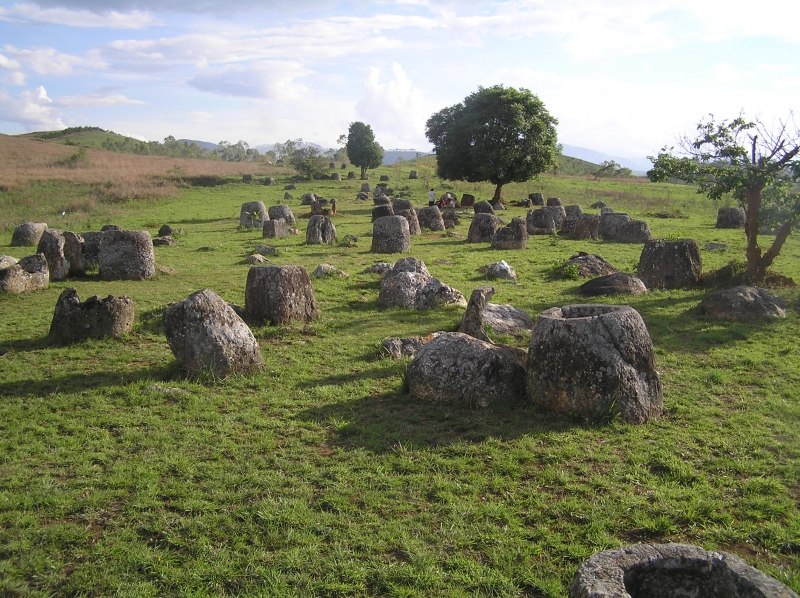
Field of jars
Archaeologists believe the jars are 1500 to 2000 years old, made by people of the Mon-Khmer group whose culture is not fully understood today. Most of the excavated artifacts date back to 500 BC – 800 AD. Anthropologists and archaeologists suggest that the jars may have been used to store remains or to store food. Lao legends claim that giants once settled in this area. According to another legend, an ancient king named Khun Cheung – waged a successful war against the enemy. He created a field of jars to ferment and store a large amount of Lao rice wine to celebrate his victory.
Bokeo Nature Reserve
Bokeo Nature Reserve was established in 2004 with the mission of preserving 123,000 hectares of primeval rainforest. This forest is a place of rare biodiversity with animals such as tigers, bears, elephants, gibbons, buffalos… and many species of birds and insects. If you are passionate about eco-tours with a journey to discover nature and wildlife, then Bokeo Nature Reserve will be a destination you should not miss. With the beautiful name “hidden paradise”, the wonderful beauty of the majestic, wild but also very lyrical natural landscape will bewilder the heart of every visitor in the journey to discover this place. The most characteristic feature of the Bokeo area is the precarious houses built on the top of tall trees. Guests can experience the feeling of primitive life while staying at this delightful house. If you come to Laos, do not miss the Bokeo Nature Reserve!
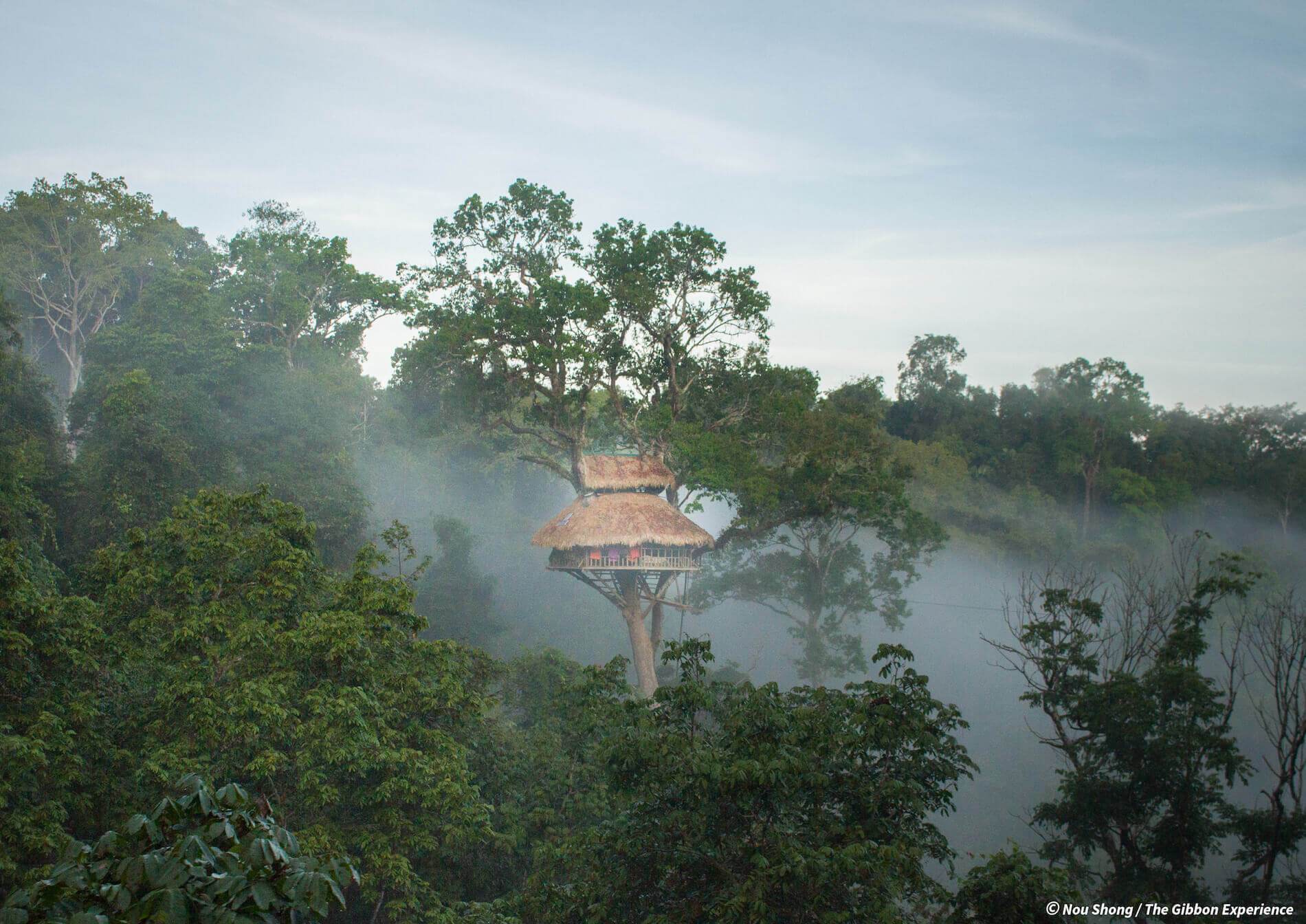
Bokeo Nature Reserve
Coming here is coming to a land full of immensity and majesty with very interesting small houses located on top of trees. At Bokeo, visitors will experience the rope swing to the tree houses or experience the precariousness on the monkey bridges. The main highlight is the completely different wildness that makes Bokeo extremely attractive to tourists. A part of the Bokeo nature reserve is also planned for people to use for farming purposes and a part for eco-tourism. Operating and protecting Bokeo nature reserve is The Gibbon Experience tourist area, which has been allowed by the Lao government since 2007. They exploit tourism in the direction of preserving nature and creating jobs. jobs for local workers, and support local people to develop sustainable agriculture. This is a model for ecotourism in the form of nature, discovery, and environmental protection.
Vang Vieng town
Located about 150km from the capital Vientiane of Laos, the small town of Vang Vieng is nestled in the vastness of green mountains. Known as peaceful countryside with a fresh, cool climate and is also a famous tourist destination in the beautiful country of Laos. There is no beautiful architecture, no modern resorts, or wide stone-lined streets… yet every year, Vang Vieng attracts a huge number of tourists, many times more than the 50,000 locals. With the advantage of ideal terrain – back against the mountain, facing the river, Vang Vieng town is known as a peaceful countryside on the Nam Song river. This small town is both a wild and peaceful town.
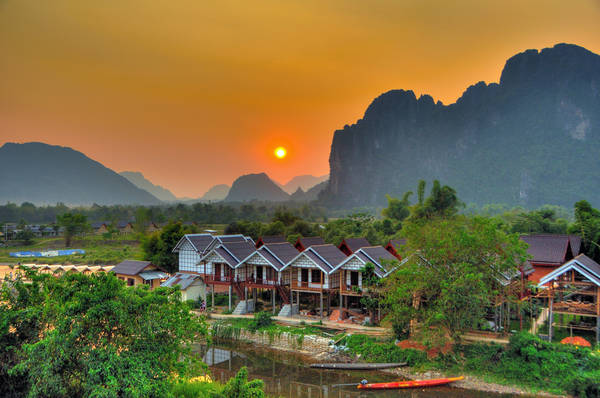
Vang Vieng town
The wild feature of Vang Vieng exudes from the green of the trees and the river flows smoothly all year round, winding around the limestone ranges. As soon as they arrive in Vang Vieng, many people are often surprised by the beauty that nature has bestowed on this small town, playing on the river seems very normal but is a very famous specialty when tourists think. about it. Stopping in Vang Vieng, visitors can rest in grass huts set up right on the water, leisurely relax on the floats to enjoy the fresh air or go kayaking to relax and admire the sky and river. water… Vang Vieng today is a town of backpackers, from Europe to Asia, regardless of tourists coming to the country of Million Elephants, they stop by this town for a few days to relax and have fun.
Pakse Champasak Province
Champasak has rich and diverse resources of forests, plains, and plateaus. The fertile land is favorable for agricultural development, this place is considered one of the largest granaries in Laos. Champasak is also an attractive tourist destination with many famous scenic spots such as Wat Phou Temple, Khone Phapheng waterfall, Phasom waterfall, and the capital, Pakse. Once the ancient capital of the ancient Kingdom of Champasak, today’s Pakse capital still preserves many ancient architectural works in a beautiful and gentle natural setting. Because it was influenced by the Cambodian Angkor culture thousands of years ago, the architectural masterpieces in Pakse still retain the imprints of the powerful ancient Angkor empire.
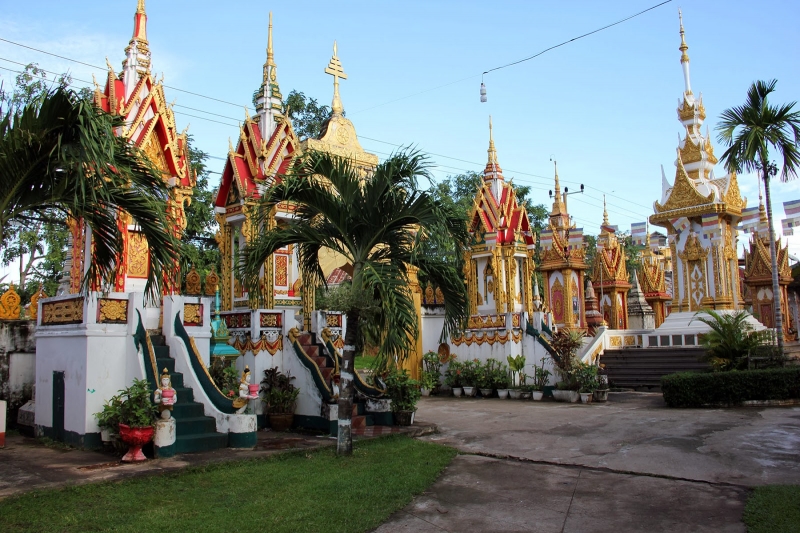
Ancient architecture in Pakse
Prominent among the historical sites here is the temple complex of Wat Phu – a cultural heritage recognized by UNESCO in 2001. Wat Phu is an architectural masterpiece that blends two religions, Theravada Buddhism and Hinduism. from India, and today, this is the place to keep the oldest historical values about the life of the Lao people for a long time. When admiring the magnificent Wat Phu temple, surely we cannot help but admire the talent and artistic wisdom of ancient Lao artists. In addition, Paske also owns a miraculous masterpiece of nature, which is Khone Phapheng – the most majestic waterfall in Southeast Asia. This place is a place that attracts many tourists every year to see and admire the greatness of nature bestowed on Laos.
Thakhek
Thakhek is known by another name “Hue of Laos”. Traveling to Thakhek, visitors will be free to experience Thakhek night with many houses with romantic French architecture – located on the Mekong River, the other bank is the city of Nakhon Phanom Thailand. The town center has much French colonial architecture such as mansions, villas, and houses with street shops. The Thai-Lao Friendship Bridge III is north of the town center, connecting Thakhek with Thailand’s Nakhon Phanom province. As we all know, Laos was once a French colonial colony at the time of the three Indochina countries at the beginning of the 20th century. And one of the ancient cities still retains the historical imprints of France. the city of Thakhek. There are not many temples like Vientiane, the typical feature of Thakhek city is the Western architectural works left by the French colonialists.
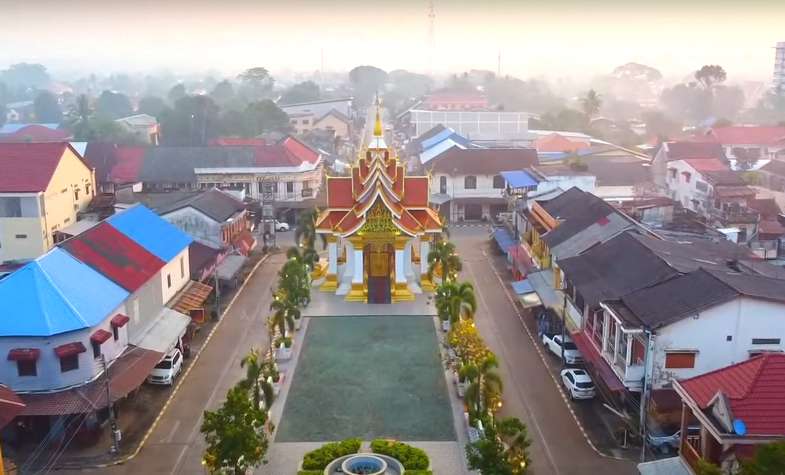
Unlike many other regions of Laos with a vibrant atmosphere, Thakhek has an ancient feature with architectural works from the French colonial period. Most of the sights that tourists can visit are natural scenes and interesting man-made scenes. When coming to Thakhek, you can visit the Khammaounae museum, lak Sao town, Wat Si Khottabong… and many other attractive places. Another point of interest for you is to be integrated into the lives of people who are both peaceful and pure. It is the beauty of nature that has contributed to making visitors feel more comfortable.
Tham Khoun Xe.Cave
Tham Khoun Xe, also known as Ex Bang Fai, is a large river cave located far from Khammouane province in central Laos. Tham Khoun Xe Cave is an underground section of the Ex Bang Fai river, is one of the largest river caves in the world with huge caves 120 m high, and 200 m wide and has many impressive geological formations. The cave originates from Annam Trung Sun mountain on the Vietnam-Laos border, crosses the Nakhai plateau, and flows into the Mekong River. Nakhai Plateau was formed from large ranges of sand and carbon rock layers dissolved by the river to create Tham Khoun Xe cave as it is today, with a length of about 7 km underground canal.

Before explorers discovered this cave, this cave was used by Lao locals for fishing on the lower reaches and mouth of the cave, while some small stone wall areas were great places for residents here. raising and harvesting swiftlets. The entrance to the cave has a dome 60m high in the large area like a step-shaped arched platform more than 150m high. The river sections in the cave are about 76m wide and 53m high, but in some areas, the width exceeds 100m. The length of the largest river section discovered is 200m. The road through the cave is about 4-12m deep. In many places, stalagmites and stalactites are more than 20 m high and there are a few pearls found in the cave with a diameter of 32 cm.
Muang Ngoi Neua
With its peaceful and idyllic beauty, the village of Muang Ngoi Neua located in northern Laos is attracting more and more tourists every year. Muang Noi Neua is a small town located about 170km northeast of Luang Prabang – this is a small village with very few people living and located right next to the green Nam Ou river. If you are a nature lover and want to explore the idyllic scenery in a peaceful village, then Muang Ngoi Neua will be the ideal destination for your Laos trip. With the fresh air, majestic mountains, and poetic scenery of the fields, you can go for a walk or climb the mountain to feel the boldness of this village.

To get to Muang Ngoi Neua village you need to go through a long way from the ancient capital, the journey from Luang Prabang to the northeast where the village is located will take you an entire morning by car. Walking along the Nam Ou River – one of the very famous rivers in Laos – you will find on its banks there are many beautiful villages lying quietly. Floating in the middle of the river, waving the oars, and gently watching the scenery, all the charming beauty of the ancient villages mixed with the mountains seems to capture your eyes. After going through a distance of more than 150km, you will see the village gradually appearing before your eyes, one side is a beautiful mountain scene on the other side is a gentle red river heavy with alluvium.
Design your private trip with Passionate Travel HERE
Contact Passionate Travel
Hotline: (+84) 915 784 369
Facebook: https://www.facebook.com/passionatetravelvn/
Email: sales@passionate-travel.com

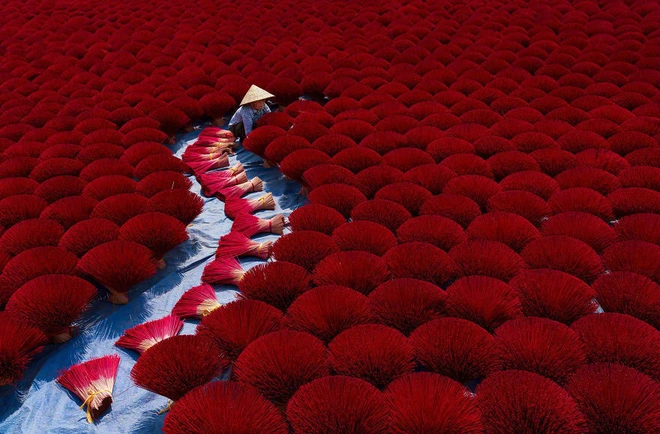 VIETNAM
VIETNAM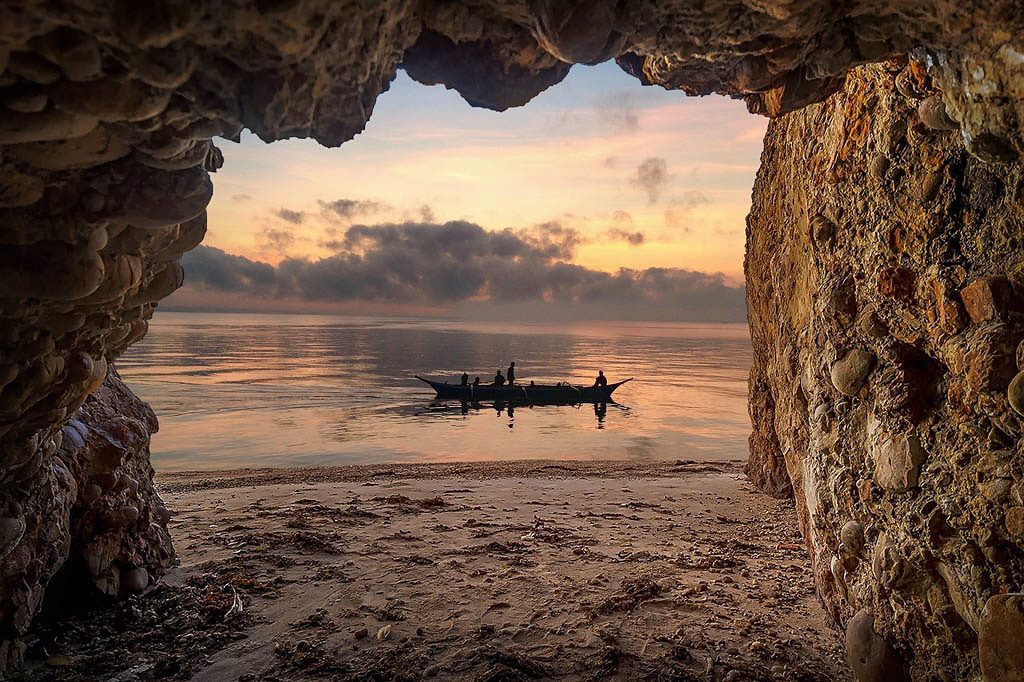 LAOS
LAOS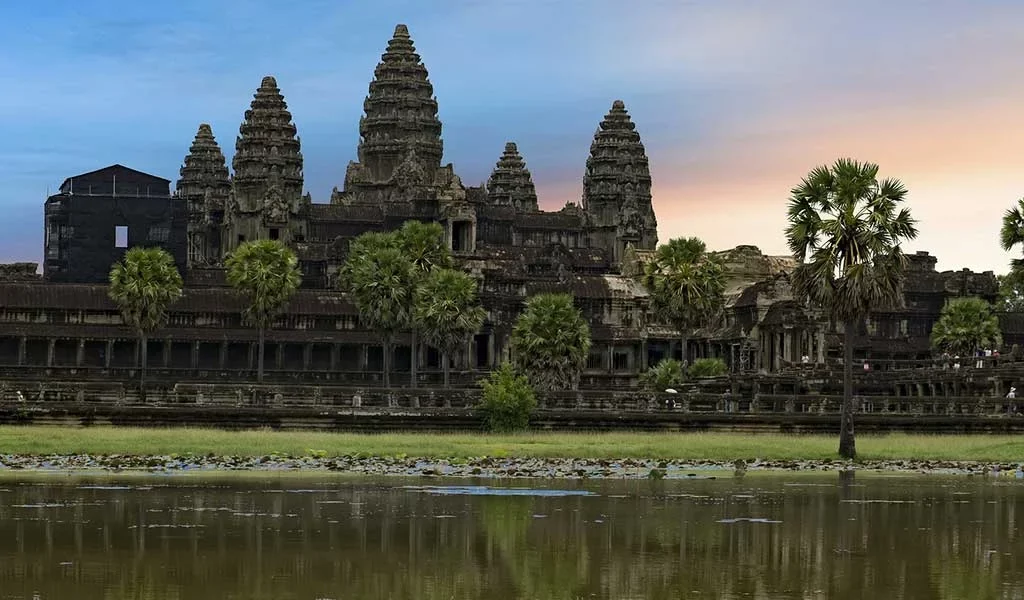 CAMBODIA
CAMBODIA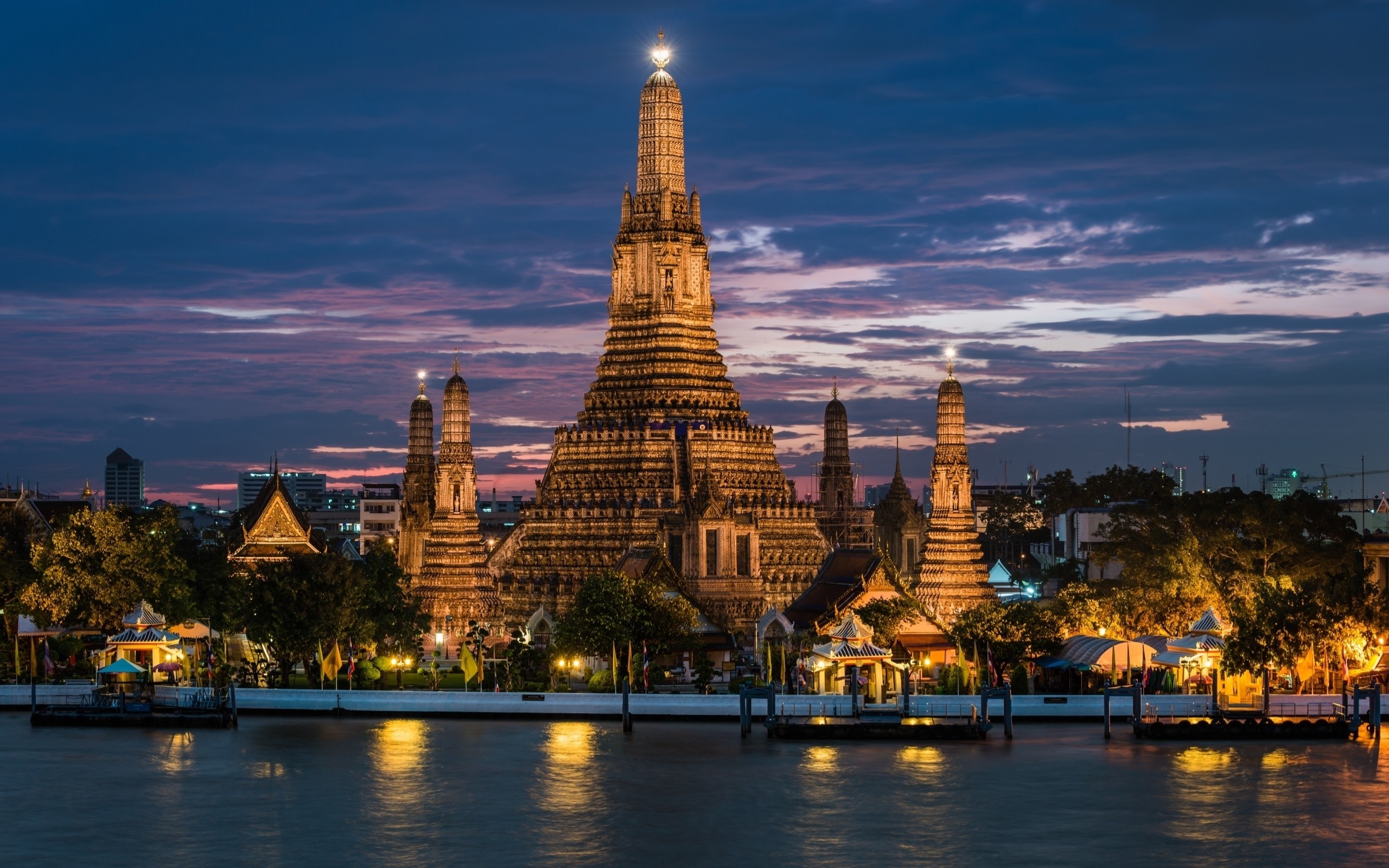 THAILAND
THAILAND